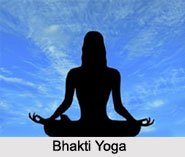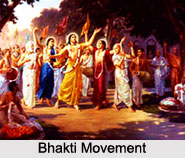 Bhakti Yoga refers to a spiritual practise of offering utmost devotion (Bhakti) to God. Bhakti is a series or succession of mental efforts at religious realization, beginning with ordinary worship and ending in a supreme intensity of love for God. Bhakti is the yoga of a personal relationship with God. A Bhakti Yogi is motivated chiefly by the power of love and sees God as the embodiment of love.
Bhakti Yoga refers to a spiritual practise of offering utmost devotion (Bhakti) to God. Bhakti is a series or succession of mental efforts at religious realization, beginning with ordinary worship and ending in a supreme intensity of love for God. Bhakti is the yoga of a personal relationship with God. A Bhakti Yogi is motivated chiefly by the power of love and sees God as the embodiment of love.Origin of Bhakti Yoga
Bhakti Yoga is considered by some to be the oldest form of Yoga with its roots in the Vedas, or ancient scriptures of India. The concept of Bhakti Yoga, or the path of love in Bhagavad Gita, originated in the epic poem Mahabharata. Bhakti Yoga eventually became a popular devotional movement in India known as the Bhakti Movements. This movement flourished between 800 and 1100 A.D. in Southern India with the explanations of divine experiences by the Vaishnava Alvars. Bhakti Yoga continued to spread throughout India as many poet-saints travelled throughout the countryside singing the praises of their Gurus and sacred deities.
Forms of Bhakti Yoga
 The various forms of Bhakti Yoga are the ways in which a devotee attains the Supreme Ideal of Life. There are 9 forms of Bhakti Yoga which are as follows;
The various forms of Bhakti Yoga are the ways in which a devotee attains the Supreme Ideal of Life. There are 9 forms of Bhakti Yoga which are as follows;Stages in Bhakti Yoga
Bhakti Yoga has 2 levels; the first is called "Gauni", or preparatory and includes all the preliminary practices; the second is "Para", or the state of supreme love and devotion to God. A beginner in Bhakti Yoga should first of all free his heart from attachment to earthly objects and pleasures; then realize divinity and consciousness of God in this life. When Bhakti ceases to be in preparatory stage and passes to the supreme, there is no fear of these hideous manifestations of fanaticism.
For more visit the page: